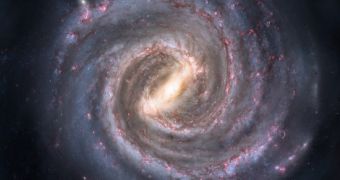Those looking to get their hands on ET's home address have a lot of work to do, not only because this visitor left without muttering a single word about where he was going, but also because the Milky Way appears to house a whopping 60 billion planets that could support alien life.
Researchers writing in The Astrophysical Journal Letters say that, according to their investigations, NASA and other scientists were terribly wrong when they argued that said galaxy was home to “just” 30 billion planets located in habitable zones.
The Inquisitr reports that, as far as University of Chicago and Northwestern University researchers are concerned, a planet can support alien life as long as it is neither too far, nor to close to a star.
In other words, it needs to be close enough to a star for the liquid water on its surface not to freeze, and far enough for the water not to boil.
True, these things have all been said before.
What's new, according to these scientists, is that the cloud cover circling over a planet also influences its potential to provide suitable conditions for the development of alien lifeforms.
This is because clouds tend to stabilize weather, the same source explains. More precisely, their presence can help cool or warm a planet, just as it happens on Earth.
“Previous estimates of the inner edge of the HZ were based on one-dimensional radiative-convective models. The most serious limitation of these models is the inability to predict cloud behavior,” the researchers explain in the Abstract for their paper.
“Here we use global climate models with sophisticated cloud schemes to show that due to a stabilizing cloud feedback, tidally locked planets can be habitable at twice the stellar flux found by previous studies. This dramatically expands the HZ and roughly doubles the frequency of habitable planets orbiting red dwarf stars,” they go on to say.
NASA and other scientists have not yet commented on these claims.

 14 DAY TRIAL //
14 DAY TRIAL //